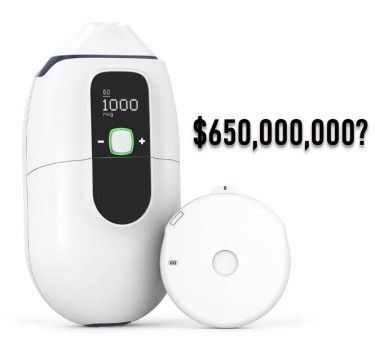Cannabis News
Cannabis Contract Approval Headaches – Canna Law Blog™
Published
2 years agoon
By
admin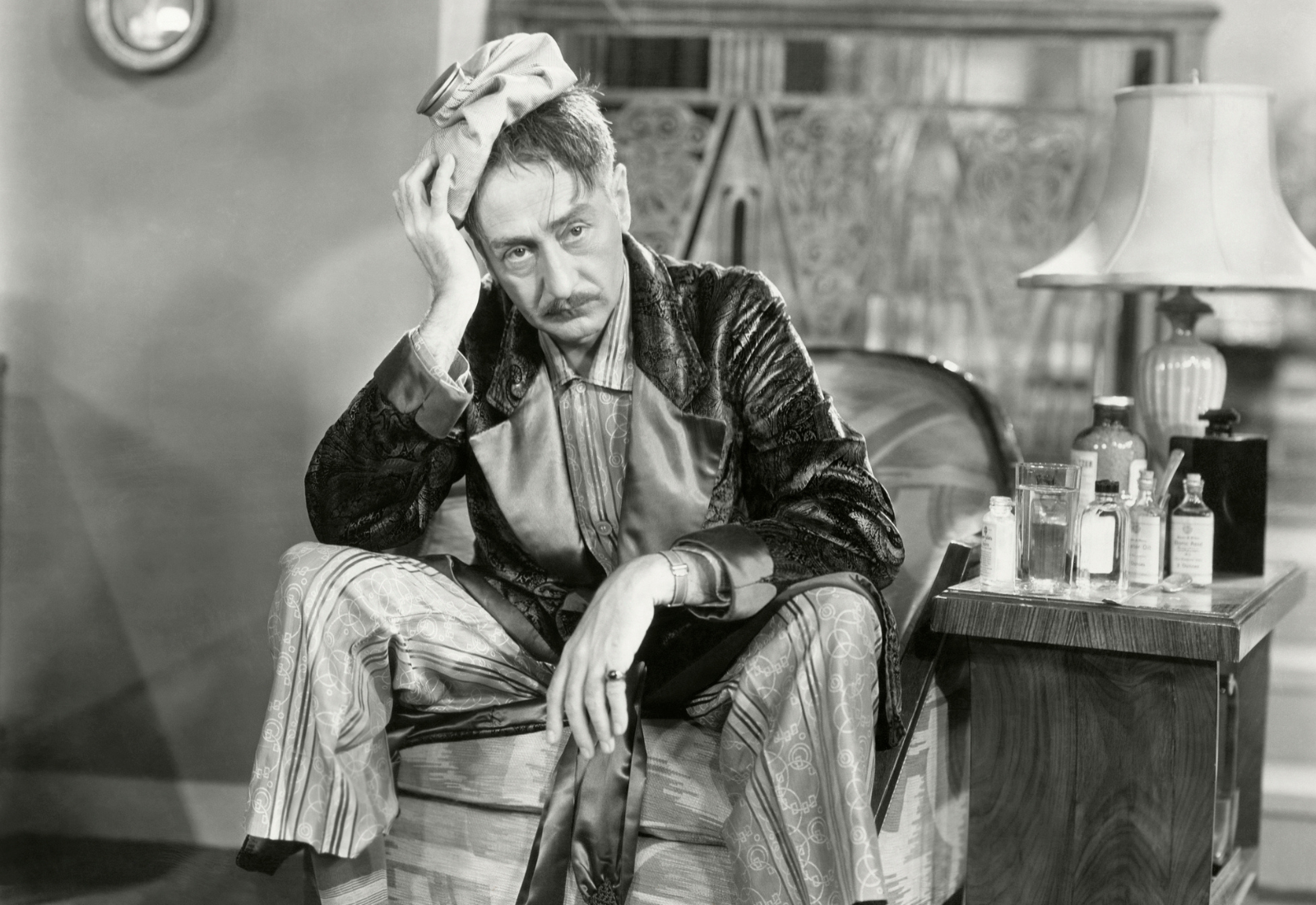
Cannabis companies move a million miles an hour. Many cannabis companies don’t spend nearly enough time focusing on the “basics,” such as corporate governance and getting things in writing (for more posts on why handshake deals are bad, see articles linked at the bottom of this post). Another area where many cannabis businesses need some improving is in handling contract approvals.
Contract approvals are exactly what they sound like: a party to a contract cannot do something without the other party’s consent (usually prior and written approval). I like to think of cannabis contract approvals as falling into one of two buckets: contract approvals related to a contract, and contract approvals that are unrelated or somewhat related to a contract.
With respect to the first bucket, these kinds of things are generally fairly obvious. A contract usually will require one party to act a certain way, and the other party will need to consent to departures from these actions. One pretty common approval is the approval of a property lessor to an assignment or sublease. These can be a huge headache for buyers in M&A deals, as I’ve discussed before. The bottom line is that any time a cannabis business wants to take any kind of action that relates in any way to a written contract, it first needs to review the contract.
The second bucket of cannabis contract approvals can be a bit more difficult. These relate to actions that may be unrelated or only somewhat related to a contract. For example, a lender may require that a borrower not secure third party financing even on matters unrelated to the lender’s loan without the lender’s prior written approval.
This second bucket is where things often get hairy. Many cannabis businesses put very little thought into unrelated existing obligations, but they absolutely should, and a good cannabis attorney will be able to help a lot. Counsel will — depending on the deal type — ask their client for relevant documents to review to determine whether any contract approvals are required to get the deal done.
If a cannabis business doesn’t have legal representation and isn’t very diligent, there’s a good chance it will do things without securing required contract approvals. Sometimes, this can lead to immediate and direct claims for damages by the other party to a contract. For example, subleasing property without the lessor’s prior written consent will generally lead to a breach claim and possibly even lease termination.
Even where an unapproved action doesn’t lead to damages and a lawsuit, it still gives the other party to a contract leverage to claim breach and kick off a process that’s generally a huge headache. It’s also a very good way to upset someone, and to lose face and trust going forward. These issues can often be resolved by simply reading a cannabis contract and going through the motions prior to taking an action.
Here are those posts I mentioned about why handshake contracts are a bad idea:
You may like
-
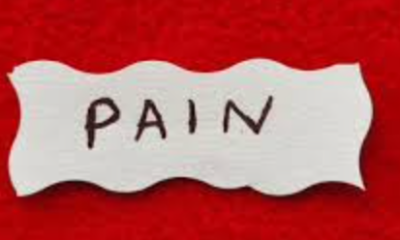

Can Cannabis Provide Some Relief From Chronic Pain
-


Does Beyoncé Consume Marijuana – The Fresh Toast
-
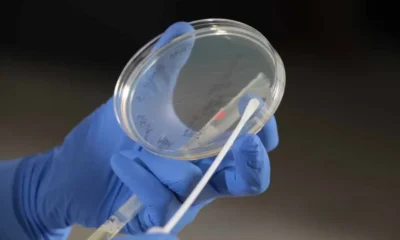

Colorado cannabis operator’s testing experiment yields damning pesticide, microbial and potency results
-


Detroit (USA): International Drug Policy Reform Conference 2025
-


How Do You Tell Your Kids You Smoked Weed at Their Age, But They Should Not?
-
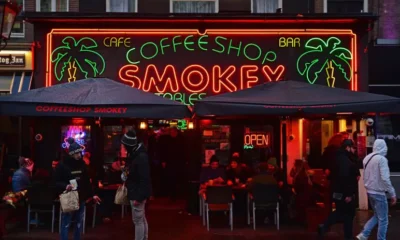

Amsterdam’s cannabis tourism is evolving: Here’s how
Cannabis News
How Do You Tell Your Kids You Smoked Weed at Their Age, But They Should Not?
Published
1 day agoon
February 2, 2025By
admin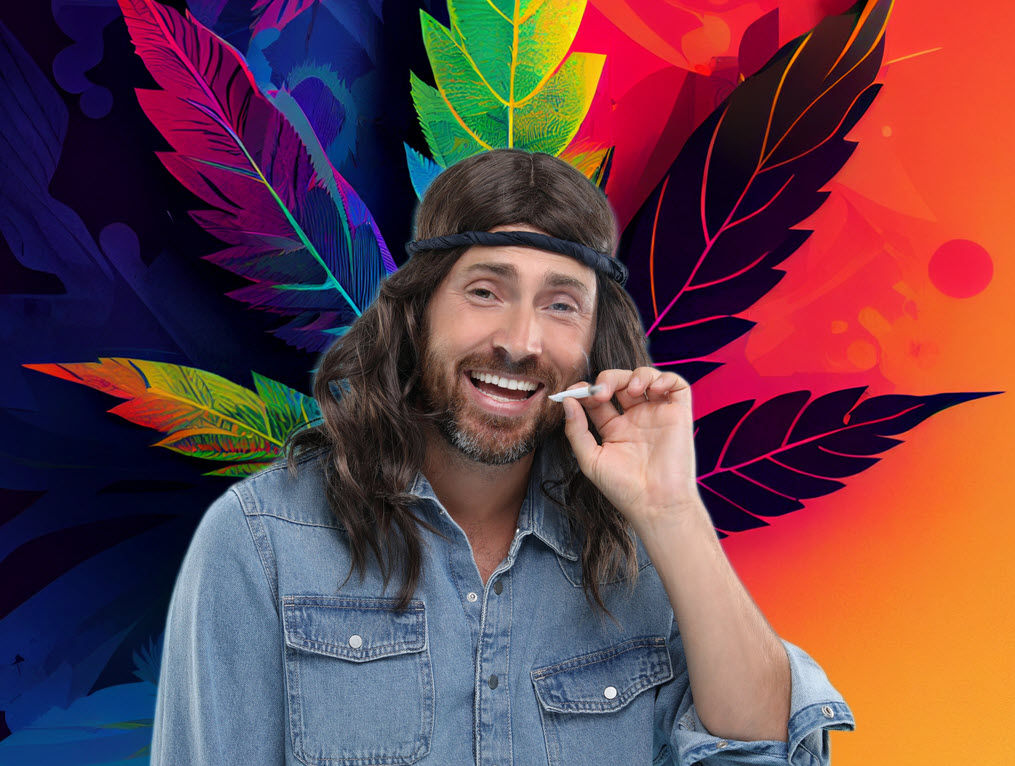

Modern Parenting: Talking to your kids about weed…our use not theirs!
Remember that uncomfortable moment when your parents caught you smoking weed? That dreaded “Talk” that followed – where you sat squirming in your chair while they cycled through concern, disappointment, and those well-worn warnings about the dangers of marijuana. Even though you knew they meant well, it felt like an eternity of awkward silence punctuated by cautionary tales and stern looks.
For those of us who came of age in the 80s, 90s, and early 2000s, this was practically a rite of passage. Getting busted, enduring The Talk, making promises to “never do it again” (fingers firmly crossed behind our backs), and eventually being grounded or punished in some creative way. While our parents were right about waiting until our brains fully developed before experimenting with cannabis, the whole experience was about as pleasant as a bad case of cottonmouth.
But times, they are a-changin’. These days, many of those same kids who got The Talk are now parents themselves – and quite a few of them enjoy cannabis responsibly as adults. This creates an interesting role reversal. Instead of lecturing kids about their weed use, modern parents face the challenge of explaining their own cannabis consumption to their children.
How do you have that conversation? When is the right time? What do you say to a curious 5-year-old who spots your vape pen? How do you address a teenager’s pointed questions about your “hypocritical” stance on underage use?
Today, we’re going to tackle these thorny questions head-on, providing modern parents with age-appropriate strategies for discussing their cannabis use with their kids. Because in 2025, The Talk isn’t just about warning kids away from weed – it’s about modeling responsible adult consumption in an era of increasing acceptance and legalization.
Let’s dive into how to navigate these conversations at different stages of your child’s development.
When it comes to discussing cannabis use with your kids, we can essentially break it down into two major developmental stages. Sure, we could slice and dice age groups into smaller segments, but we’d just end up rehashing variations of the same conversation. For simplicity’s sake, let’s focus on “Pre-Teen” (ages 3-12) and “Teen” (13-19), though you’ll need to adjust these guidelines based on your child’s individual development.
During those early years, less is definitely more. Your five-year-old doesn’t need a detailed explanation of the endocannabinoid system or terpene profiles. A simple “It’s Mommy’s medicine” or “It helps Daddy’s back pain” usually suffices. Kids this age are generally satisfied with straightforward, matter-of-fact explanations that fit within their understanding of the world.
However – and this is crucial – don’t fool yourself into thinking they’re not paying attention. Kids are like tiny surveillance cameras with unlimited storage capacity. They notice everything, even when you think they’re absorbed in their LEGOs or favorite cartoon.
I’ll never forget a scene I witnessed in San Pancho, a laid-back surf town in Mexico. At some local’s gathering, I watched in amazement as toddlers perfectly mimicked their cannabis-consuming parents – right down to the characteristic head bob, half-lidded eyes, and that unmistakable “stoned” expression. They weren’t judging; they were just doing what kids do best: observing and imitating.
This brings me to the most critical point about handling cannabis use during your children’s early years: it’s less about what you say and more about how you behave. Your actions will shape their perceptions far more than any explanation you provide.
If you can consume cannabis while maintaining your role as a responsible, present, and reliable parent – if you’re still helping with homework, making dinner, playing games, and being their rock of stability – then you’re sending the right message. Kids don’t need you to be perfect, but they do need you to be consistent and dependable.
The goal isn’t to hide your cannabis use but to demonstrate that it doesn’t fundamentally change who you are or your ability to be their parent. If you can maintain your composure, fulfill your responsibilities, and avoid turning into a stereotype (looking at you, couch-locked snack attackers), your kids are likely to view cannabis as just another aspect of adult life – no more dramatic or concerning than having a glass of wine with dinner.
This approach, combined with age-appropriate explanations, should carry you through the pre-teen years fairly smoothly. But fair warning: once those teenage years hit and complex reasoning kicks in, you’re in for a whole new ballgame. But we’ll get to that particular joy in a moment.
“You don’t pay her!” (Sorry, couldn’t resist the dad joke.) But all humor aside, welcome to the psychological warzone known as “The Teen Years.” If you thought explaining cannabis to your pre-teen was tricky, buckle up – you’re in for a wild ride.
What makes teenagers so different? In a word: everything. By thirteen, your sweet, accepting child has morphed into a walking paradox of complex reasoning and questionable decision-making. They’re developing their own opinions, challenging social norms, and thanks to the hormone monster residing in their developing brains, experiencing emotions with the intensity of a Michael Bay explosion.
Let’s be real – teenagers aren’t exactly operating at peak cognitive efficiency. And I say this with love, having been a spectacularly dumb teenager myself. Between raging hormones, peer pressure, and the desperate need to seem “cool,” their decision-making abilities often resemble a game of darts played blindfolded.
Here’s the kicker – at some point, your teen will encounter cannabis in the wild. Maybe at a party, behind the school gym, or through that one friend whose older brother “totally knows what he’s talking about.” They’ll be exposed to various narratives about weed, many of them wildly inaccurate. This is precisely why you need to step up your game and establish clear guidelines about responsible drug use.
Your message should be straightforward: Cannabis, like alcohol, is primarily for adults. Yes, it has medical applications for some young people, but recreational use should wait until their brains are fully developed. I recommend taking it a step further – tell them you’d love to be their first smoking buddy… when they’re old enough. This might sound counterintuitive, but it accomplishes two things: it acknowledges their future autonomy while establishing a clear boundary about present use.
This is also the time to have broader conversations about drugs in general. Don’t just stop at cannabis – discuss the good, the bad, and the ugly. Talk about different substances, the people who use them, and the various situations they might encounter. Not to frighten them, but to prepare them for the real world they’re about to enter.
The goal isn’t to lecture but to equip them with knowledge and critical thinking skills. They’re going to face these situations without you present, and you want them prepared to make informed decisions.
However – and this is crucial – read the room. If your kid innocently asks why you use cannabis, maybe hold off on sharing that wild story about the time you ate an entire pizza while convinced your cat was plotting against you. Keep it age-appropriate and relevant to their level of curiosity.
Remember, you’re not just teaching them about cannabis – you’re modeling how to have mature, honest conversations about complex topics. And in the hormone-addled battlefield of adolescence, that’s worth its weight in gold.
Here’s a plot twist that might surprise you – today’s kids are actually more straight-edge than we were. They’re drinking less, experimenting with fewer drugs, and even putting off sex longer than previous generations. Who would’ve thought that unlimited access to TikTok and social media would make getting high seem less appealing?
The irony isn’t lost on me. Just as us former “rebellious stoners” have become responsible cannabis-consuming parents, our kids are more likely to be found coding an app than hotboxing behind the gym. And let’s be honest – that’s probably a good thing.
But this shift in youth behavior coincides with a massive transformation in how society views cannabis. The plant that once sparked nationwide panic is now as commonplace as craft beer in many states. The “devil’s lettuce” has gone mainstream, and with it, our need to have more nuanced, honest conversations with our kids about its use.
Being upfront about your cannabis consumption isn’t about promoting drug use – it’s about fostering trust and open dialogue with your children. By discussing your own use responsibly and age-appropriately, you’re not just explaining a plant; you’re teaching critical thinking, personal responsibility, and the importance of making informed decisions.
It’s time to ditch the old taboos and stop pretending our teenagers are living in a bubble of innocence. The world they’re growing up in is complex, often chaotic, and full of choices we never had to face. The best gift we can give them isn’t protection from these realities, but the knowledge and confidence to navigate them wisely.
Because ultimately, that’s what good parenting is about – not shielding our kids from the world, but preparing them to face it head-on, armed with understanding, wisdom, and the ability to make smart choices. Even if that means having some uncomfortable conversations about your own relationship with cannabis along the way.
Inspiration:
https://www.reddit.com/r/entwives/comments/1i4gtx7/
how_are_we_talking_to_our_kids_about_cannabis_use/
PARENTING IN THE LEGALIZATION ERA, READ ON…
PARENTING IN THE TIME OF LEGALIZATION – FORBID IT OR ALLOW IT?
Cannabis News
What if the World’s Biggest Tobacco Company Entered the Cannabis Industry?
Published
2 days agoon
February 1, 2025By
admin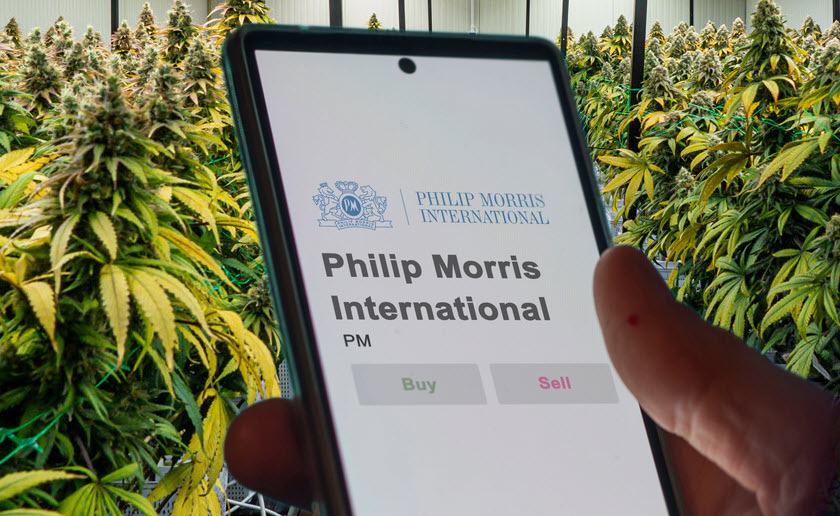
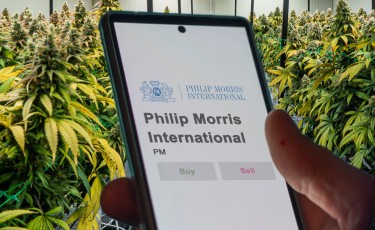
The World’s Biggest Tobacco Company Is Quietly Entering The Weed Industry
What Does This Mean For The Future Of Weed?
From the 1950’s to the 1990’s, cigarettes were considered to be a ‘cool’ habit and somewhat of a fashion accessory globally.
There was even a time when Hollywood celebrities were photographed smoking, which made them seem like the epitome of sophistication. Big names including Humphrey Bogart and James Dean were pictured smoking, but it was also so common and accepted around the world. That did not last long, as eventually evidence that cigarettes killed people from cancer and other fatal health conditions became impossible to ignore.
While there were many names in Big Tobacco that helped popularize the consumption of cigarettes, and made it easy for people to get access to it, Philip Morris International (PMI) were one of the biggest players – and they still are, to this day. They own some of the most common cigarette brands that are consumed around the world, including Marlboro, Chesterfield, and L&M. Surely, one can blame PMI’s products for tempting people to make poor health choices that may have taken them to the grave…
According to the World Health Organization, tobacco smoking is responsible for the deaths of around 8 million people globally.
Yet, with the rise of cannabis, PMI wanted a piece of the pie.
The History Of Philip Morris’ Interests In Cannabis
If you’re only hearing about Big Tobacco’s interest in cannabis right now, you might be shocked to learn that their interest in weed goes as far back as 1969. There are some internal documents that prove PMI was interested in learning about the potential of cannabis. However, they were considering weed a competitor as well as a potential product.
In fact, a 1970 memo even shows that PMI acknowledges the possibility of marijuana legalization.
Fast forward to 2016, when PMI made a significant investment worth $20 million to an Israeli biotech firm specializing in medical cannabis, called Syqe Medical. At the time, Syqe was working on developing a medical marijuana inhaler which would provide metered dosing of weed for medical patients. According to the deal, Syqe Medical will also work on developing certain technologies that would enable Philip Morris to minimize the health effects caused by smoking.
By 2023, Philip Morris made a deal to acquire Syqe Medical for a cool $650 million, as long as there were certain conditions met. In a report by Calcalist, the deal features a number of milestones, though the bottom line is that if the inhaler developed by Syqe passes the clinical trials, PMI will then go ahead to buy all shares of the company for the aforementioned amount.
Another Silent Move Into The Weed Space
More recently, in January 2025, a press release was published detailing Vectura Fertin Pharma’s (VFP), a subsidiary of Philip Morris International, joint venture with a Canadian biotech firm focusing on cannabinoid-based drugs – Avicanna.
According to the press release, the joint venture seeks to promote cannabis accessibility and research. Avicanna already has a stronghold in the wellness sector. However, the press release hardly makes any other mention about the involvement of Philip Morris International, but it’s clear that Big Tobacco has long had their eye in the cannabis industry. Back in 2016, when they first got involved with Syqe Medical, it highlighted the firm’s interest in wellness, but the partnership with Avicanna cements that.
Changes In Consumer Perception And Habits
It only makes sense for Big Tobacco to pivot to cannabis – or wellness, in general. After all, if you can’t beat em, join em!
And it’s clear: for several years now, there has been a decrease in cigarette smoking; young adults are now shifting from tobacco, as well as alcohol, and increasing their cannabis consumption instead.
And Philip Morris isn’t the only player in Big Tobacco who’s expressed an interest in a slice of the (weed) pie. Back in 2017, American holding company Altria Group began moving away from cigarettes, with their $1.8 billion investment into the Cronos Group, a large Canadian cannabis company. Altria owns several big American companies including Philip Morris; so much so, that even their website now declares the tagline: “Moving Beyond Smoking”.
However, Altria faced issues due to regulatory concerns.
British American Tobacco (BAT) has also been interested in cannabis. For some time now, they’ve been researching weed products, particularly infusing CBD and THC into their electronic cigarettes which are sold under the Vuse and Vype brand names. In 2021, BAT began a trial launch of CBD products in the United Kingdom.
RJ Reynolds, which is also now under British American Tobacco, has also considered joining the weed industry. According to internal documents, RJ Reynolds has considered cannabis both an opportunity and a competitor as far back as the 1970s.
Conclusion
At the end of the day, cannabis isn’t a real threat to the tobacco industry. The tobacco industry simply shot itself on the foot – all it needed was time, to prove that it does indeed cause cancer and kill people. On the other hand, cannabis was a friend more than a foe: legalization and a growing consumption of weed proved its ability to save lives.
That said, the relationship between tobacco and weed continues to evolve. Through cannabis legalization, Big Tobacco can learn from the challenges and opportunities that cannabis had to go through. It can be said that one thing is clear, though: the drop in tobacco consumption is a major opportunity for cannabis, with more people looking to substitute tobacco with a healthier alternative.
As a response, we may continue to see tobacco companies investing in Big Cannabis – just as we’ve seen in the examples mentioned above. This partnership is fantastic news for both industries, and we can only hope to see more!
PHILIP MORRIS’ MOVES IN CANNABIS, READ ON…
WHY DID PHILIP MORRIS JUST BUY A MEDICAL MARIJUANA INHALER COMPANY?
Cannabis News
Who are the Next 5 States to Legalize Recreational or Medical Cannabis Starting in 2025?
Published
3 days agoon
January 31, 2025By
admin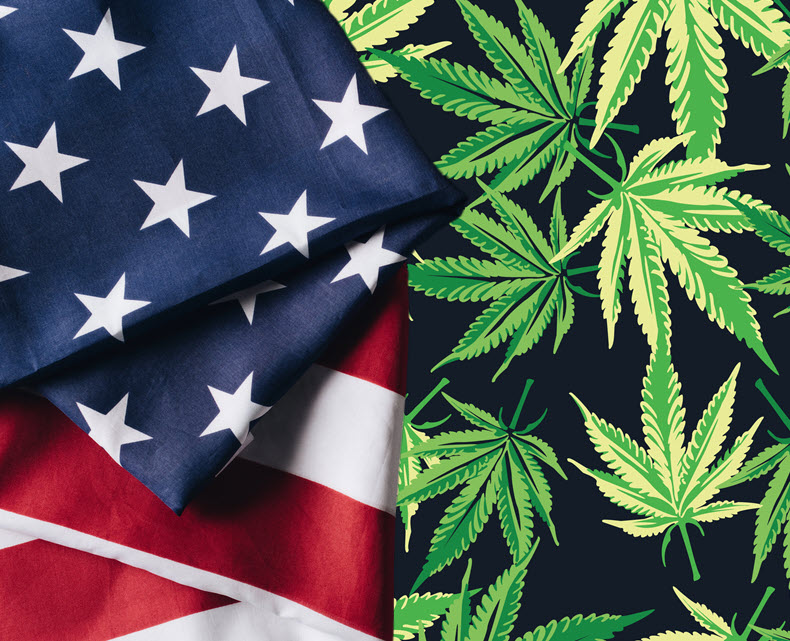

As the landscape of marijuana legalization continues to evolve across the United States, 2025 is shaping up to be a pivotal year for states considering reforms. Advocacy groups are closely monitoring legislative developments and public sentiment, identifying specific states that are likely to make significant strides toward legalization. This article explores the states most likely to legalize marijuana in 2025, examining the political climate, public opinion, and advocacy efforts that may influence these changes.
The Current State of Marijuana Legalization in the U.S.
As of 2023, a growing number of states have legalized marijuana for both medical and recreational use. According to the National Conference of State Legislatures (NCSL), 21 states and Washington D.C. have legalized recreational marijuana, while 37 states allow medical marijuana use. This rapid expansion reflects changing public attitudes toward cannabis, which have shifted dramatically over the past two decades.
Public Opinion Trends
Public support for marijuana legalization has reached unprecedented levels. A Gallup poll conducted in late 2022 found that 68% of Americans support legalizing marijuana, a significant increase from just 25% in 1995. This shift in public opinion is crucial for lawmakers as they consider new legislation. Advocacy groups are leveraging this support to push for reforms in states where legalization has yet to occur.
The Role of Advocacy Groups
Organizations such as the National Organization for the Reform of Marijuana Laws (NORML) and the Marijuana Policy Project (MPP) play a vital role in advocating for legalization. They provide research, mobilize grassroots campaigns, and lobby lawmakers to promote cannabis reform. Their insights into which states are most likely to legalize in 2025 are based on legislative trends, political dynamics, and public sentiment.
Key States Likely to Legalize Marijuana in 2025
Pennsylvania has emerged as a strong contender for marijuana legalization in 2025. The state has a robust medical marijuana program established in 2016 that has seen significant success, with over 600,000 registered patients. However, advocates argue that the time has come to expand access to adult-use cannabis.
Political Support
The recent election of Governor Josh Shapiro has energized legalization efforts. Shapiro has expressed support for legalizing recreational marijuana and has indicated a willingness to work with lawmakers across party lines. In early 2025, a bipartisan bill is expected to be introduced that aims to create a regulated market for adult-use cannabis.
Advocacy Efforts
Advocacy groups are actively mobilizing support among residents and lawmakers alike. Campaigns highlighting the potential economic benefits—such as job creation and tax revenue—are gaining traction. Additionally, public polls indicate strong support among Pennsylvanians for legalization, further bolstering advocacy efforts.
Hawaii has long been known for its progressive stance on cannabis; it was one of the first states to legalize medical marijuana in 2000. However, efforts to legalize recreational use have stalled in previous legislative sessions.
Current Developments
In 2025, advocates are optimistic about renewed efforts to pass comprehensive cannabis legislation. The Senate previously approved a bill aimed at legalizing recreational use, but it failed in the House due to opposition from conservative lawmakers.
Political Dynamics
The political landscape appears more favorable this year with new leadership in the House that may be more open to discussing cannabis reform. Governor Josh Green has also expressed support for legalization, emphasizing its potential economic benefits for Hawaii’s tourism-driven economy.
Advocacy Strategies
Advocacy groups are focusing on grassroots campaigns and community engagement to build momentum for legalization. Public forums and educational events aim to inform residents about the benefits of legalization while addressing concerns regarding regulation and safety.
South Carolina has made strides toward medical marijuana legalization but remains one of the few states without comprehensive access to cannabis products. In recent years, lawmakers have introduced several bills aimed at establishing a medical program; however, these efforts have faced significant hurdles.
Legislative Prospects for 2025
In 2025, advocates are hopeful that a revived medical marijuana proposal will gain traction. The proposed legislation would allow patients with qualifying conditions access through licensed pharmacies under strict regulations.
Political Climate
The political climate remains challenging, with resistance from conservative factions within the legislature. However, increasing public support—evidenced by recent polls showing over 70% approval for medical cannabis—may sway some lawmakers toward supporting reform.
Advocacy Efforts
Advocacy organizations like SC Compassionate Care are working tirelessly to educate the public and legislators about the benefits of medical marijuana. They emphasize patient stories and health outcomes as part of their strategy to garner support.
Kansas is one of the few remaining states without any form of legalized marijuana use. Despite this restrictive environment, there is a growing movement advocating for medical cannabis legislation.
Legislative Opportunities
In 2025, advocates believe there is a significant opportunity for progress on medical marijuana legislation. Several bills have been introduced in previous sessions that gained some bipartisan support but ultimately failed due to opposition from key lawmakers.
Public Sentiment
Public opinion in Kansas is shifting; recent surveys indicate that nearly 60% of residents support legalizing medical marijuana. This growing acceptance may influence legislators who have previously opposed reform.
Advocacy Strategies
Groups like Kansas Cannabis Coalition are actively campaigning for change by organizing rallies and educational events throughout the state. They aim to raise awareness about the therapeutic benefits of cannabis while pushing for legislative action.
North Carolina has been making headlines regarding potential cannabis reform. While it currently allows limited use of CBD oil for certain medical conditions, comprehensive medical or recreational legalization remains elusive.
Political Dynamics
In recent years, there have been increased discussions among lawmakers about introducing medical marijuana legislation. The current governor supports reform efforts; however, opposition from conservative members poses challenges.
Advocacy Efforts
Advocacy groups such as NC NORML are working diligently to build grassroots support for legalization initiatives. They focus on educating citizens about cannabis benefits while lobbying legislators directly.
Wisconsin’s approach toward cannabis remains conservative compared to neighboring states like Illinois and Michigan. While some local municipalities have decriminalized possession or implemented medicinal programs at their discretion, comprehensive statewide reform is still lacking.
Legislative Prospects
Advocates believe that changing political dynamics could lead Wisconsin toward more progressive policies regarding both medical and adult-use legalization by 2025. Recent elections have resulted in a more favorable balance within state government regarding cannabis issues.
Public Support
Public opinion polls indicate strong support among Wisconsinites—over 60% favoring legalization efforts—creating an opportunity for advocates seeking legislative change.
Advocacy Strategies
Organizations like Wisconsin NORML are mobilizing citizens through educational campaigns aimed at dispelling myths surrounding cannabis while promoting its economic benefits through taxation and job creation associated with regulated markets.
New Hampshire has long been considered an outlier among New England states regarding cannabis laws; it legalized medical marijuana back in 2013 but has yet to pass adult-use legislation despite numerous attempts over recent years.
Current Developments
In early 2025, advocates anticipate renewed efforts aimed at legalizing recreational use through proposed bills introduced during legislative sessions scheduled throughout spring months ahead.
Political Climate
While there is bipartisan interest among some legislators regarding potential reforms related specifically towards taxation structures associated with regulated markets—opposition remains strong from conservative factions within government bodies overall limiting chances significantly unless public pressure mounts significantly enough leading into future elections cycles ahead!
Virginia made headlines when it legalized recreational cannabis possession starting July 1st ,2021—but sales remain unregulated until further action occurs within state government bodies responsible overseeing these matters moving forward!
Legislative Prospects
Advocates believe that enhancing existing laws by adding regulated sales will be crucial steps towards creating an effective market structure benefiting consumers while generating tax revenue needed fund essential services statewide!
Conclusion
As we look ahead into 2025—the landscape surrounding marijuana legalization continues evolving rapidly across various states nationwide! With growing public support coupled alongside advocacy group efforts pushing forward reforms—it’s clear many opportunities exist within multiple jurisdictions ripe opportunities await those willing engage actively participate shaping future policies governing this vital industry.
WHAT STATES MAY NEVER LEGALIZE WEED, READ ON…

Can Cannabis Provide Some Relief From Chronic Pain

Does Beyoncé Consume Marijuana – The Fresh Toast

Colorado cannabis operator’s testing experiment yields damning pesticide, microbial and potency results

Detroit (USA): International Drug Policy Reform Conference 2025

How Do You Tell Your Kids You Smoked Weed at Their Age, But They Should Not?

Amsterdam’s cannabis tourism is evolving: Here’s how

What if the World’s Biggest Tobacco Company Entered the Cannabis Industry?

cheeba cannabis & hemp academy Presents The Rise of the African Cannabis Industry Free WEBINAR tuesday, 4th February, 7 – 8:30pm SAST

5 Ways To Manage Return To Office

The Best Cannabis Infused Pasta Sauce For The Weekend

Distressed Cannabis Business Takeaways – Canna Law Blog™

United States: Alex Malyshev And Melinda Fellner Discuss The Intersection Of Tax And Cannabis In New Video Series – Part VI: Licensing (Video)

What you Need to Know

Drug Testing for Marijuana – The Joint Blog

NCIA Write About Their Equity Scholarship Program

It has been a wild news week – here’s how CBD and weed can help you relax

Cannabis, alcohol firm SNDL loses CA$372.4 million in 2022

A new April 20 cannabis contest includes a $40,000 purse

Your Go-To Source for Cannabis Logos and Designs

UArizona launches online cannabis compliance online course
Trending
-

 Cannabis News2 years ago
Cannabis News2 years agoDistressed Cannabis Business Takeaways – Canna Law Blog™
-

 One-Hit Wonders2 years ago
One-Hit Wonders2 years agoUnited States: Alex Malyshev And Melinda Fellner Discuss The Intersection Of Tax And Cannabis In New Video Series – Part VI: Licensing (Video)
-

 Cannabis 1012 years ago
Cannabis 1012 years agoWhat you Need to Know
-

 drug testing1 year ago
drug testing1 year agoDrug Testing for Marijuana – The Joint Blog
-

 Education2 years ago
Education2 years agoNCIA Write About Their Equity Scholarship Program
-

 Cannabis2 years ago
Cannabis2 years agoIt has been a wild news week – here’s how CBD and weed can help you relax
-

 Marijuana Business Daily2 years ago
Marijuana Business Daily2 years agoCannabis, alcohol firm SNDL loses CA$372.4 million in 2022
-

 California2 years ago
California2 years agoA new April 20 cannabis contest includes a $40,000 purse





